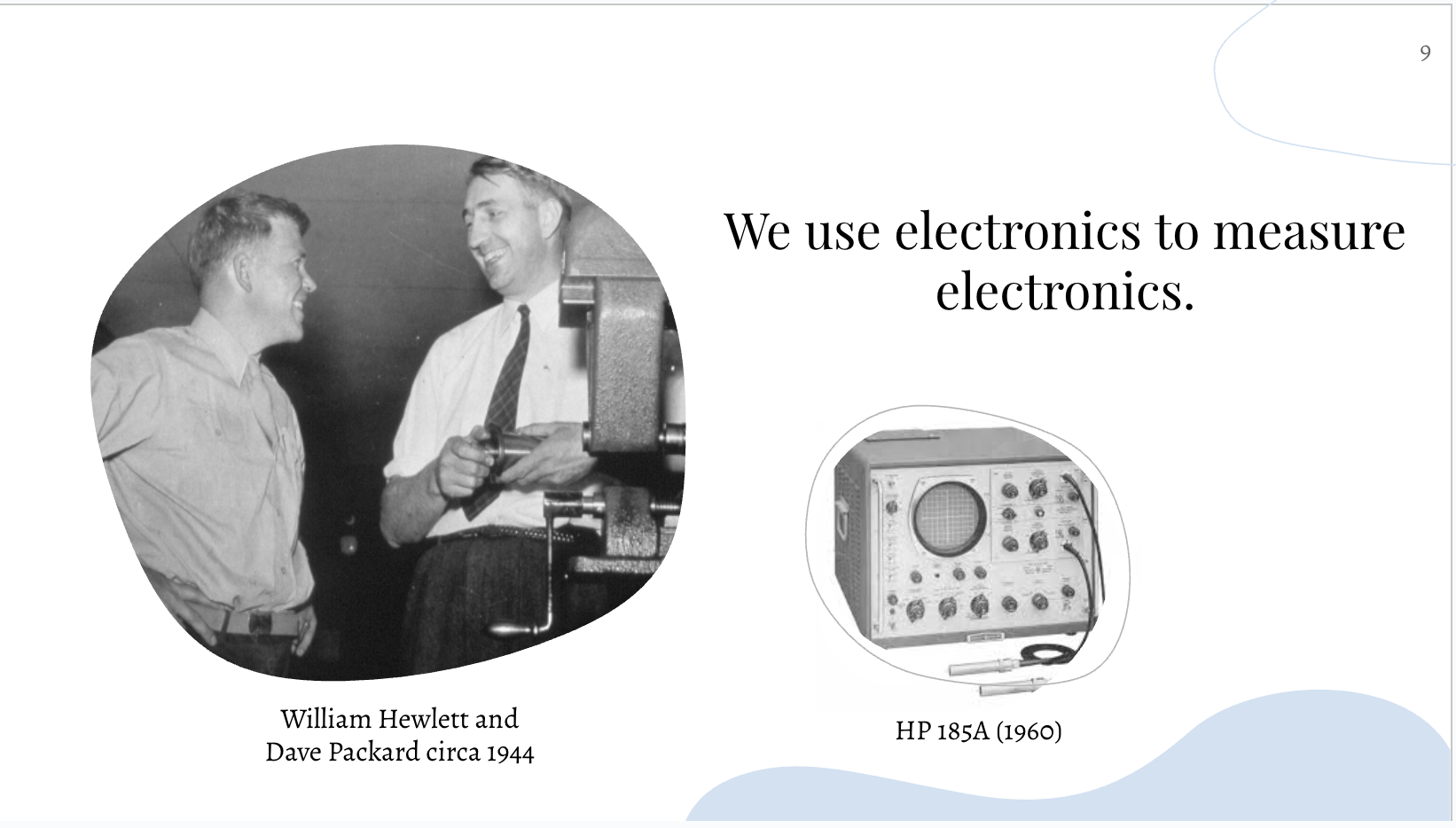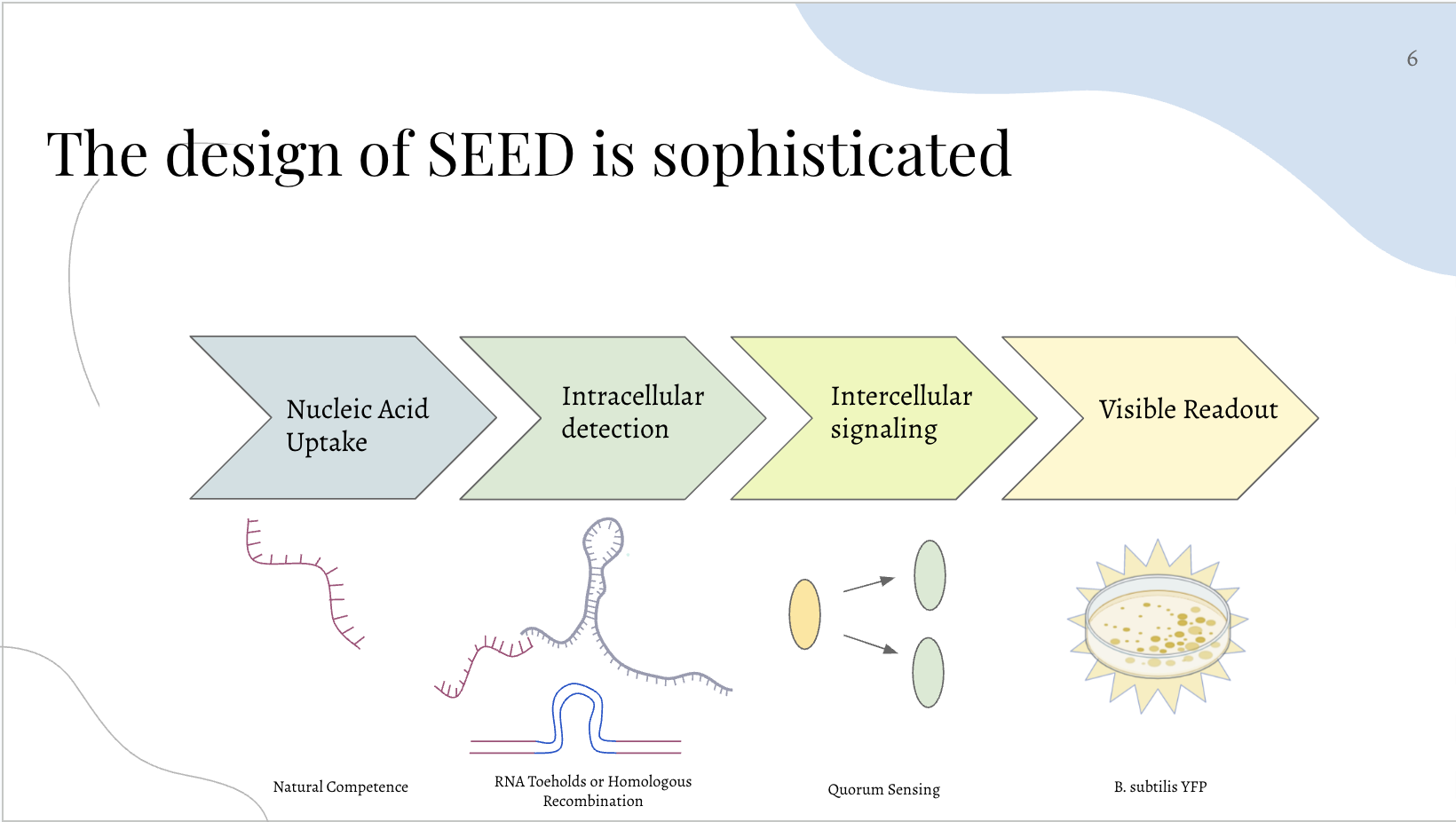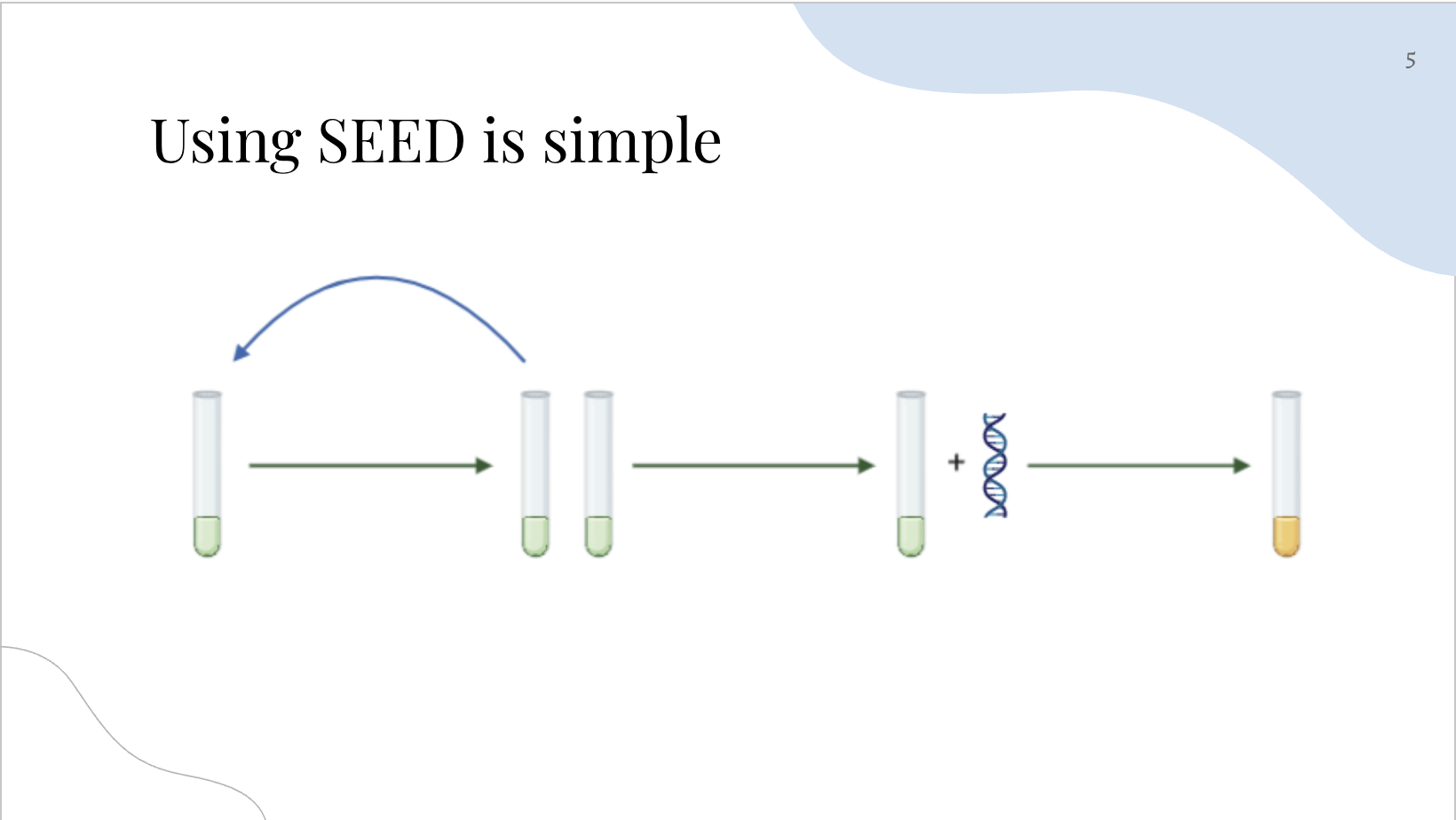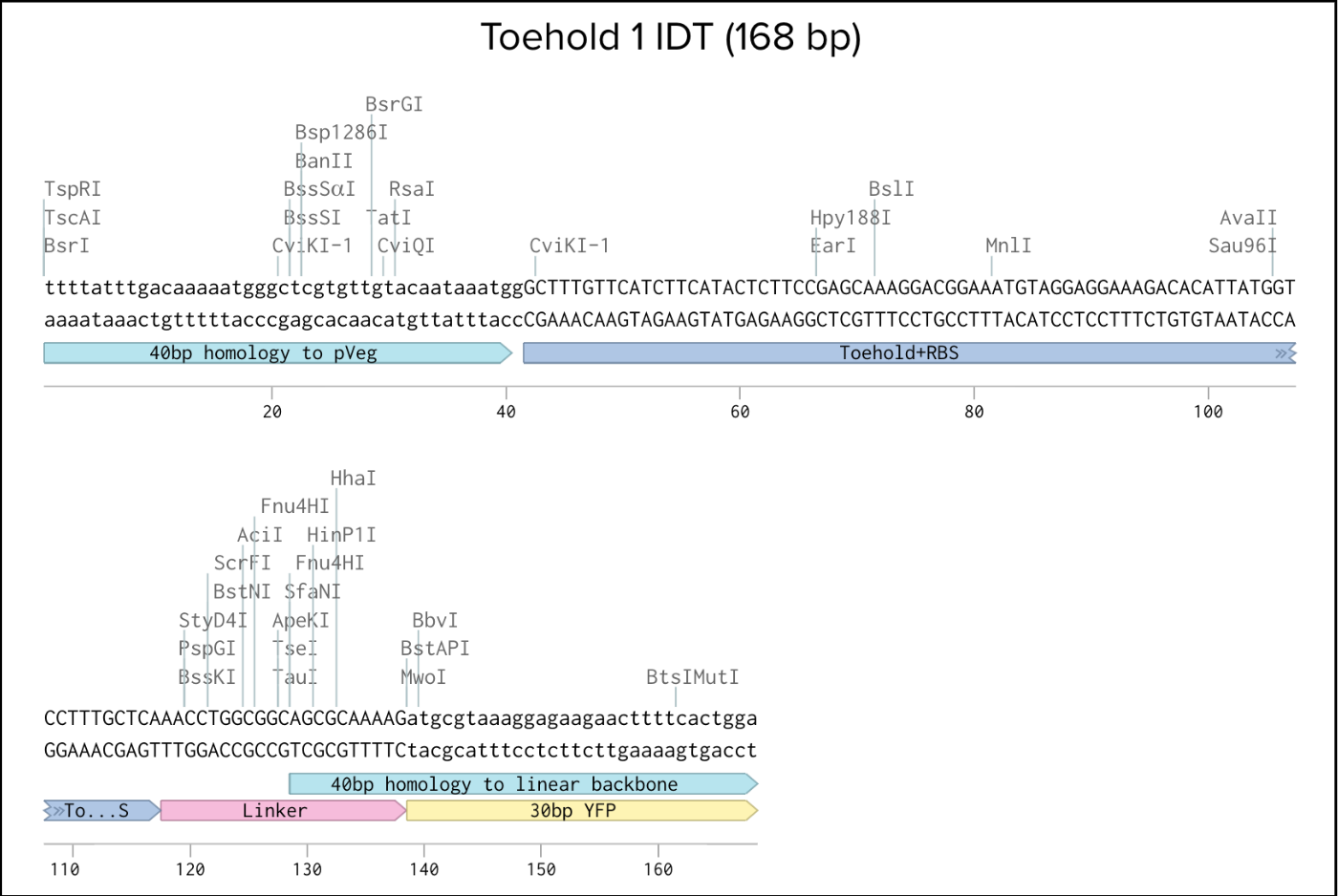
In the wake of the COVID-19 pandemic, there was a fundamental inability for the production of diagnostic systems to match the the exponential dynamics of a self-replicating virus. To solve this mismatch of scalability, I worked with a team of Stanford undergraduates to create a self-replicating diagnostic system that could grow faster than the virus.
Signal Amplification via Quorum Sensing
Results
Homologous Recombination:
Toehold Detection:
In Situ Detection Sensitivity:
Significant Findings:
Detection threshold at least 10^6 copies of DNA/mL, which is on par with nasopharyngeal viral load for influenza.
This suggests the validity of engineering commensal microbiota for in situ diagnostic testing.
For more details, see the full Stanford Stanford 2020 iGEM project.















